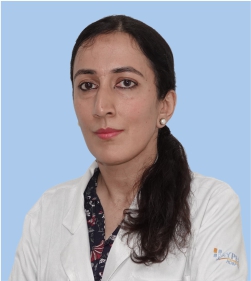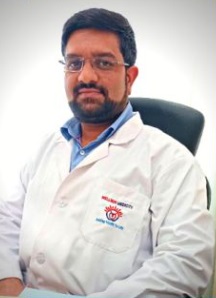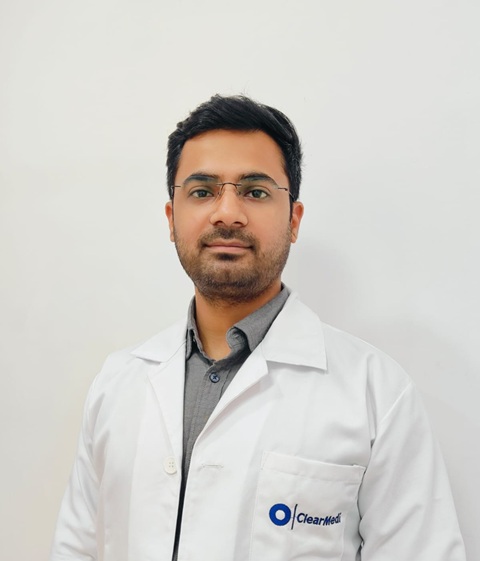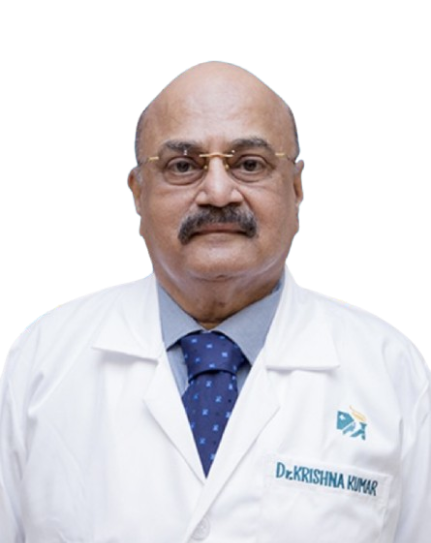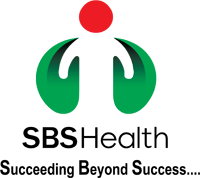Parotidectomy: Types, Procedure, Recovery, and Success
Dr. Aman Priya Khanna

Treatment Duration
3 Hours
------ To ------4 Hours
Treatment Cost
₹ 40,000
------ To ------₹ 1,20,000

According to a study by Swarnkar et al., 2021, about 81.3% of salivary gland tumours occur in the parotid gland. Parotidectomy is a common surgical procedure that treats these tumours. Patients undergoing this procedure experience relief from symptoms and a reduction in the risk of further complications.
A superficial parotidectomy, the most frequently performed type, generally has a quicker recovery time than more extensive surgeries. Advances in surgical techniques and imaging have significantly improved outcomes for patients. Continue reading to learn more about the procedure, benefits, and surgery recovery.
Procedure Name | Parotidectomy |
Alternative Name | Parotid gland surgery |
Conditions Treated | Tumours, infection, and chronic inflammation in the parotid gland |
Benefits of the Procedure | Minimally invasive options, facial nerve monitoring to preserve its function, less scarring |
Treated By | Otolaryngologists |
You can check Parotidectomy Cost here.
What is parotidectomy?
Parotidectomy is a surgical procedure to remove all or part of the parotid gland to treat tumours. There are three types of parotidectomy, based on the extent of the gland being removed. These include:
Superficial Parotidectomy is the most common type in which the superficial lobe of the parotid gland is removed. It is typically performed for benign tumours.
Total Parotidectomy involves removing the entire parotid gland, including both the superficial and deep lobes. It is usually performed for malignant tumours.
Radical Parotidectomy is a more extensive total parotidectomy procedure that involves removing the entire parotid gland along with the facial nerve.
Anatomy and Physiology of the Parotid Gland
The parotid gland is the largest of the salivary glands. It is located on each side of the face, just in front of and below the ear. The anatomy of the gland is as follows:
Stensen’s duct is the main excretory duct of the parotid gland that carries saliva to the mouth. It opens near the upper molar teeth.
Lymph nodes are located around the outer part of the parotid gland.
The inner grooved surface of the gland rests against the jaw and the masseter muscle, which connects the lower jaw to the cheekbone.
The facial nerve (cranial nerve VII) divides the gland into superficial and deep lobes.
The parotid gland plays a vital role in the digestive system through its production and secretion of watery saliva that aids digestion. It keeps the mouth moist and prevents bacterial cavities in teeth.
Expert Doctors (10)
NABH Accredited Hospitals (10)


Conditions Treated With Parotidectomy
Parotidectomy is performed to treat various conditions affecting the parotid gland. The following are some primary conditions treated with this surgical procedure:
Benign tumours such as pleomorphic adenomas.
Malignant tumours like mucoepidermoid carcinoma.
Persistent parotid gland infections that do not respond to antibiotics and other conservative treatments.
Chronic parotitis (inflammation of the parotid gland).
Sialolithiasis (salivary gland stones) blocks saliva flow and causes pain and swelling.
Who needs parotidectomy?
Parotidectomy is recommended for those exhibiting certain symptoms that suggest the need for surgical intervention. These symptoms may include the following:
A painless lump or swelling in the face or jaw
Numbness or burning sensation in the face
Muscle weakness on one side of the face
Difficulty eating or swallowing
Loss of facial movement, leading to trouble opening the mouth
Parotidectomy Procedure
A parotidectomy surgery is performed under general anaesthesia and takes about three to four hours to complete. Superficial parotidectomy steps may differ slightly from those of total parotidectomy. However, the general procedure is as follows:
Incision: The parotidectomy incision is made in front of the ear, extending back and downwards into the upper part of the neck. It minimises visible scarring.
Identifying Facial Nerve: The surgeon exposes the parotid gland. They identify and isolate the facial nerve to prevent nerve damage.
Superficial Parotidectomy: If only the superficial lobe is affected, the surgeon removes this portion of the gland while preserving the facial nerve.
Total Parotidectomy: If the entire gland needs to be removed, the surgeon carefully dissects both the superficial and deep lobes. The nearby lymph nodes in the neck affected by cancer cells will also be removed.
Closure: The incision is closed with sutures. A drain may be placed to prevent fluid accumulation.
Before and on the Day of Parotidectomy
Doctors provide detailed instructions on preparing for a parotidectomy. Adhering to these guidelines before and on the day of the procedure is crucial to ensure the success of the surgery.
Before Parotidectomy
The preparations for a parotidectomy begin two weeks before the procedure. The patient is asked to quit smoking as it can increase the risk of breathing problems during the surgery. Other preparatory guidelines are as follows:
Parameters | Pre-requisites |
Pre-op Assessments |
|
Risk Evaluation |
|
Medications | Stop taking blood-thinning medications ten days before surgery |
Anaesthesia Selection | General |
Fasting | 6-8 hours before the procedure |
On the Day of Parotidectomy
On the day of the procedure, patients should arrive at the hospital at the scheduled time for last-minute check-ups. The pre-operative process includes the following:
Parameters | Pre-requisites |
Consent | Mandatory |
Surgical Preparation | Changing into a hospital gown |
Physical Evaluation | Vitals check-up (blood pressure, breathing, temperature, etc.) |
IV Line | Yes, for medications and fluids |
Patient Positioning | Supine (lying on the back) with the head turned away from the side of the surgery |
After Parotidectomy and Recover
It is common to experience pain and swelling at the surgical site for about three weeks. Patients should adhere to post-operative care instructions for a smooth hospital and home recovery.
In Hospital Recovery
Patients usually need to stay in the hospital overnight after the parotidectomy procedure. During this stay, they can expect the following:
They are moved to a recovery room, where they are closely monitored for vital signs, including heart rate, blood pressure, and oxygen levels.
Pain medications are administered to keep individuals comfortable.
The doctor asks patients to smile, close their eyes, and perform other facial movements to check the function of the facial nerves.
At-home Recovery
Recovery after parotidectomy generally takes 7-10 days. Patients can return to their normal activities one-month post-procedure. However, numbness and facial weakness may take up to a year to subside. The recovery guidelines that one should follow at home include the following:
Keep the surgical site clean and dry. Follow the doctor’s instructions for changing dressings and caring for the incision.
Take prescribed pain medications to manage discomfort.
Start with a bland diet. Avoid sour or spicy foods.
Sleep with the head elevated above the heart level for 3-5 days to reduce swelling.
To prevent strain on the surgical site, avoid strenuous activities, heavy lifting, and bending over for at least 2 to 4 weeks.
Avoid smoking and excessive alcohol consumption for two weeks after surgery, as these can impair healing.
Follow-up Appointment
The timing of follow-up visits can vary from individual to individual. However, generally, the first visit is scheduled one or two days after the procedure to remove any surgical drains. The next appointment is scheduled five to seven days post-surgery, during which the sutures are removed. Four to six weeks after the operation, doctors assess the healing process.
Benefits of Parotidectomy
Parotidectomy offers several procedural benefits that enhance the safety and effectiveness of the surgery. The advancements in surgical techniques ensure a more precise approach, contributing to better patient outcomes and quicker recovery times. Other advantages of the surgery are as follows:
The use of minimally invasive techniques in modern parotidectomy reduces damage to surrounding structures.
Advanced imaging techniques during surgery help accurately locate tumours or affected areas.
During surgery, a facial nerve monitoring device is used to protect the facial nerve. This minimises the risk of nerve damage and preserves facial function.
The parotidectomy incision is hidden once it heals.
Risks and Complications of Parotidectomy
Parotidectomy, while generally safe, carries potential complications like any surgical procedure. Understanding these can help prepare and manage expectations. Some common side effects of the procedure include:
Infection
Bleeding and haematoma (collection of blood outside of blood vessels)
Fluid collection at the operation site
Damage to nearby organs
Allergic reactions to anaesthesia
Risks specific to parotidectomy are as follows:
Numbness in the face, ear, or jaw
Frey’s syndrome (sweating on the cheek area while eating)
First bite syndrome (severe pain initiated on the first bite of a meal)
When to call a doctor?
After a parotidectomy, patients should monitor their recovery and be aware of signs that may require immediate medical attention. The following are specific situations when they should call a doctor:
A fever of 100.4 F or higher.
Signs of infection, such as increased warmth, swelling, redness, or pus draining from the incision site.
New or worsening facial weakness or swelling.
Trouble eating, drinking, blinking, or smiling.
Nausea or vomiting.
Risks of Delaying Parotidectomy
Delaying a parotidectomy, especially when indicated for treating tumours or severe infections, can lead to several complications. The potential consequences of postponing this surgery are as follows:
Progression of Disease: If left untreated, benign parotid tumours can become malignant.
Tumour Growth: If the parotidectomy is delayed in tumour cases, whether benign or malignant, the tumour may continue to grow. Larger tumours can be more difficult to remove.
Increased Risk of Malignancy: For malignant tumours, delaying surgery can allow cancer to spread to nearby tissues or distant organs.
Functional Impairment: Larger tumours or prolonged infections might lead to more significant discomfort, impacting jaw movement, swallowing, and speaking.
Cost of Parotidectomy
The cost of a parotidectomy in India can vary depending on several factors. Generally, the cost starts at ₹ 40,000, with an average price of ₹ 90,000. The maximum expense can reach up to ₹ 1,20,000.
Procedure Name | Estimated Cost Range |
Parotidectomy | ₹ 40,000 to ₹ 1,20,000 |
Note: These are approximate costs. For accurate pricing details, please speak to a HexaHealth expert.
Factors that affect the cost of parotidectomy are as follows:
Surgeon’s Expertise: Highly skilled and renowned surgeons have a higher fee for their services.
Type of Hospital: Private centres generally charge more than public hospitals due to better facilities available.
Geographic Location: Urban areas have higher prices compared to rural areas due to differences in the cost of living.
Type of Parotidectomy: A superficial parotidectomy is less expensive than a total or radical parotidectomy.
Takeaway
Parotidectomy is a surgical procedure for addressing various issues related to the parotid gland, including tumours and chronic infections. The success of the surgery depends on surgical technique and post-operative care. Patients considering this procedure should consult with experienced surgeons to discuss its benefits and risks.
For those undergoing procedures like superficial parotidectomy, HexaHealth ensures access to experienced surgeons and top healthcare facilities. We help you achieve a smooth and speedy recovery. Our team delivers the highest-quality care tailored to each patient’s specific needs.
Frequently Asked Questions (FAQ)
What is a parotidectomy?
A parotidectomy is a surgical procedure that removes part or all of the parotid gland, the largest of the salivary glands. This surgery is typically performed to address abnormalities within the gland, such as tumours or infections.
Why is a parotidectomy performed?
Parotidectomy is primarily performed to treat benign or malignant conditions within the parotid gland. These include:
Tumours
Persistent infections
Chronic inflammation
Salivary gland stones
What are the different types of parotidectomy procedures?
There are three types of parotidectomy procedures, depending on the extent of surgery. These are as follows:
Superficial parotidectomy, which removes only part of the gland.
Total parotidectomy, which removes the entire gland.
Radical parotidectomy, which involves removing the gland along with the facial nerve.
Who performs a parotidectomy?
A superficial or total parotidectomy is performed by an otolaryngologist (ENT surgeon). These doctors specialise in surgical procedures involving the ears, nose, throat, and other structures of the head and neck.
What happens during a parotidectomy surgery?
During a parotidectomy surgery, the surgeon removes part or all of the parotid gland to address disorders such as tumours or chronic infections. Careful measures are taken to preserve the facial nerve.
How is a parotidectomy surgery performed?
The superficial parotidectomy steps can differ slightly from those of a total parotidectomy. However, the general procedure is as follows:
The patient is placed under general anaesthesia.
The surgeon makes an incision in front of the ear extending into the hairline.
They remove the necessary portion of the parotid gland while constantly monitoring the facial nerve to prevent damage.
What may happen if a parotidectomy is delayed?
Delaying a parotidectomy can lead to various complications. These may include the following:
Growth and potential spread of tumours
Increased difficulty in surgical removal
Difficulty swallowing and speaking
Worsening of symptoms like pain and swelling
How long does it take to recover from a parotidectomy?
Recovery from a parotidectomy typically takes 7-10 days, during which patients may experience swelling and discomfort. Most can resume normal activities after a month, but complete healing and normalisation of sensations can take up to a year.
Will I have a scar after a parotidectomy surgery?
Yes, you will likely have a scar after the surgery, but it is not very visible. Surgeons usually try to make parotidectomy incisions along natural skin creases to minimise scarring.
How can I manage pain and discomfort after a parotidectomy?
Pain and discomfort after a parotidectomy can be managed with prescribed pain medications and applying ice packs. Keeping the head elevated when resting helps reduce swelling.
What kind of follow-up care is needed after a parotidectomy?
Follow-up care after a parotidectomy is important to ensure smooth recovery and prevention of complications. It includes the following:
Pain medications to manage discomfort
Wound care to prevent infections
Avoiding strenuous activities to prevent strain on the surgical site
Regularly visiting the surgeon to monitor the healing
Managing any complications
Are there any dietary restrictions after a parotidectomy?
Dietary restrictions after a parotidectomy are minimal. However, patients are often advised to start with bland foods and gradually reintroduce regular foods as their comfort permits to avoid stressing the surgical site. They should avoid sour and spicy foods.
Can a parotidectomy affect facial nerves?
A parotidectomy can affect facial nerves, leading to temporary or, rarely, permanent facial weakness or paralysis. Surgeons use nerve monitoring during surgery to minimise this risk.
What is the success rate of a parotidectomy for tumour removal?
The success rate of a parotidectomy for tumour removal is over 92.5%, especially for benign tumours. When performed by experienced surgeons, it offers effective long-term outcomes and minimal recurrence.
How soon can I return to normal activities after a parotidectomy?
Returning to normal activities after a parotidectomy can vary, but typically, patients can resume light activities after a week. Full recovery, including more strenuous activities, might take a month, depending on the individual’s health and the extent of the surgery.
What is the long-term outlook after a parotidectomy?
The long-term outlook after a parotidectomy is generally positive, with most patients experiencing successful symptom resolution. Ongoing monitoring is essential to manage any potential complications or recurrences.
Is a parotidectomy a common surgery?
A parotidectomy is a common surgery in head and neck procedures. It is performed to treat tumours or chronic infections of the parotid gland.
Is a parotidectomy successful?
A parotidectomy is generally successful, particularly in removing benign tumours and alleviating symptoms. Success rates for malignant tumours depend on the stage of cancer and the extent of surgery required.
Can a parotid tumour grow back after surgery?
Yes, a parotid tumour can grow back after surgery, especially if it is malignant and not all cancerous cells are removed. However, recurrence depends on the type of tumour and the surgical technique. According to a study by Roh, 2022, pleomorphic adenoma recurs in 2-7% of cases.
Can you live without your parotid gland?
Yes, you can live without your parotid gland. Although it is the largest of the salivary glands, other glands, like submandibular and sublingual, can secrete saliva. There are also other minor salivary glands throughout the mouth and throat.
References
All the articles on HexaHealth are supported by verified medically-recognized sources such as; peer-reviewed academic research papers, research institutions, and medical journals. Our medical reviewers also check references of the articles to prioritize accuracy and relevance. Refer to our detailed editorial policy for more information.
- Swarnkar N, Venkataraman S, Saravanam PK. Salivary gland tumours: a retrospective study at a tertiary care centre in South India. International Journal of Otorhinolaryngology and Head and Neck Surgery [Internet]. 2021 Apr 23 [cited 2024 May 22];7(5):825–8.

- Parotid Gland: Anatomy, Function, Location & Definition [Internet]. Cleveland Clinic. 2022.

- El Sayed Ahmad Y, Winters R. Parotidectomy [Internet]. PubMed. Treasure Island (FL): StatPearls Publishing; 2020.

- Learn About Parotidectomy ‣ THANC Guide [Internet]. 2019.

- Parotidectomy: Procedure Details, Recovery & Outlook [Internet]. Cleveland Clinic.

- Parotidectomy | Jefferson Health [Internet]. www.jeffersonhealth.org. [cited 2024 May 22].

- Mayo Clinic. Salivary gland tumors - Symptoms and causes [Internet]. Mayo Clinic. 2018.

- Parotidectomy: Overview, Periprocedural Care, Technique. eMedicine [Internet]. 2022 Jul 26;

- Surgical Procedures: Parotidectomy | OncoLink [Internet]. www.oncolink.org.

- Salivary Gland Cancer: Symptoms, Causes, Treatments [Internet]. Cleveland Clinic.

Last Updated on: 4 July 2024
Reviewer

Dr. Aman Priya Khanna
MBBS, DNB General Surgery, Fellowship in Minimal Access Surgery, FIAGES
14 Years Experience
Dr Aman Priya Khanna is a well-known General Surgeon, Proctologist and Bariatric Surgeon currently associated with HealthFort Clinic, Health First Multispecialty Clinic in Delhi. He has 14 years of experience in General Surgery, Proctolo...View More
Author

She has extensive experience in content and regulatory writing with reputed organisations like Sun Pharmaceuticals and Innodata. Skilled in SEO and passionate about creating informative and engaging medical conten...View More






